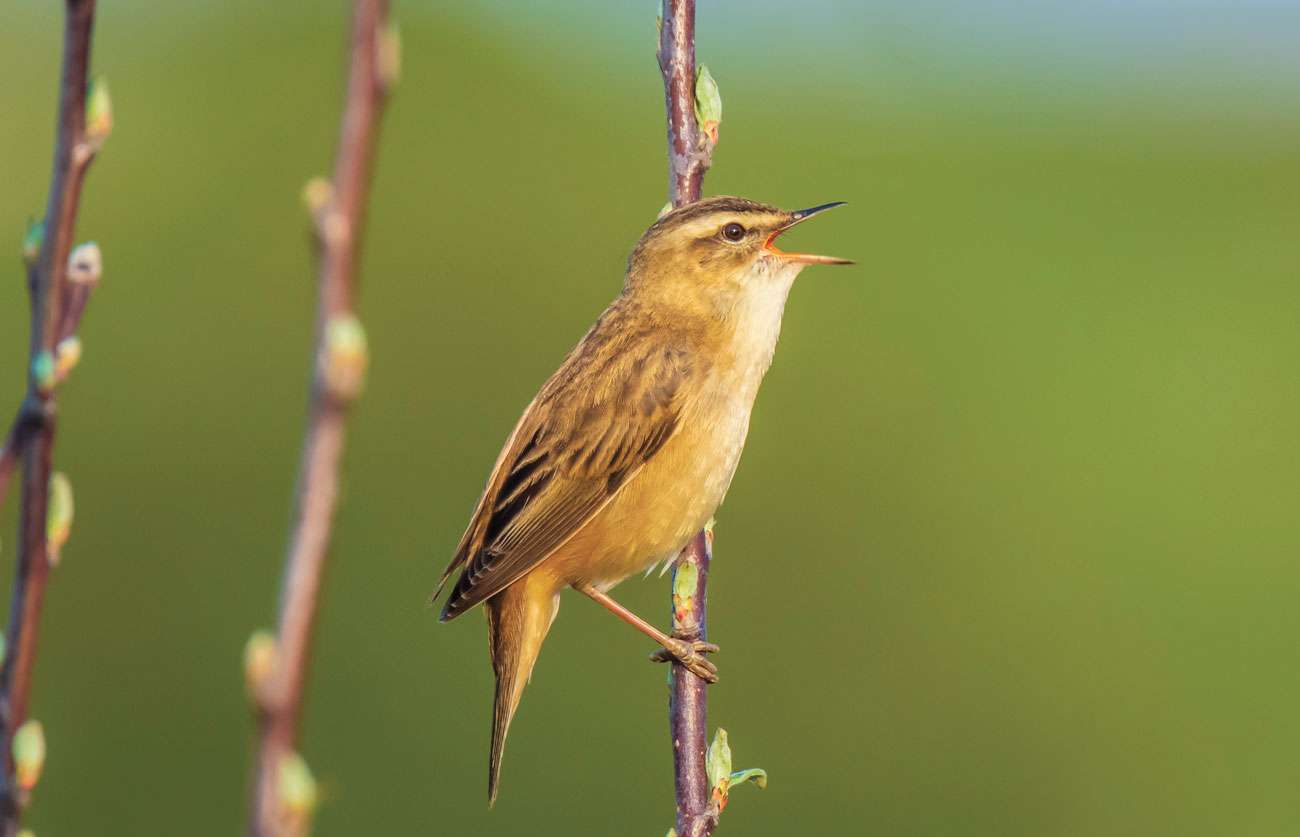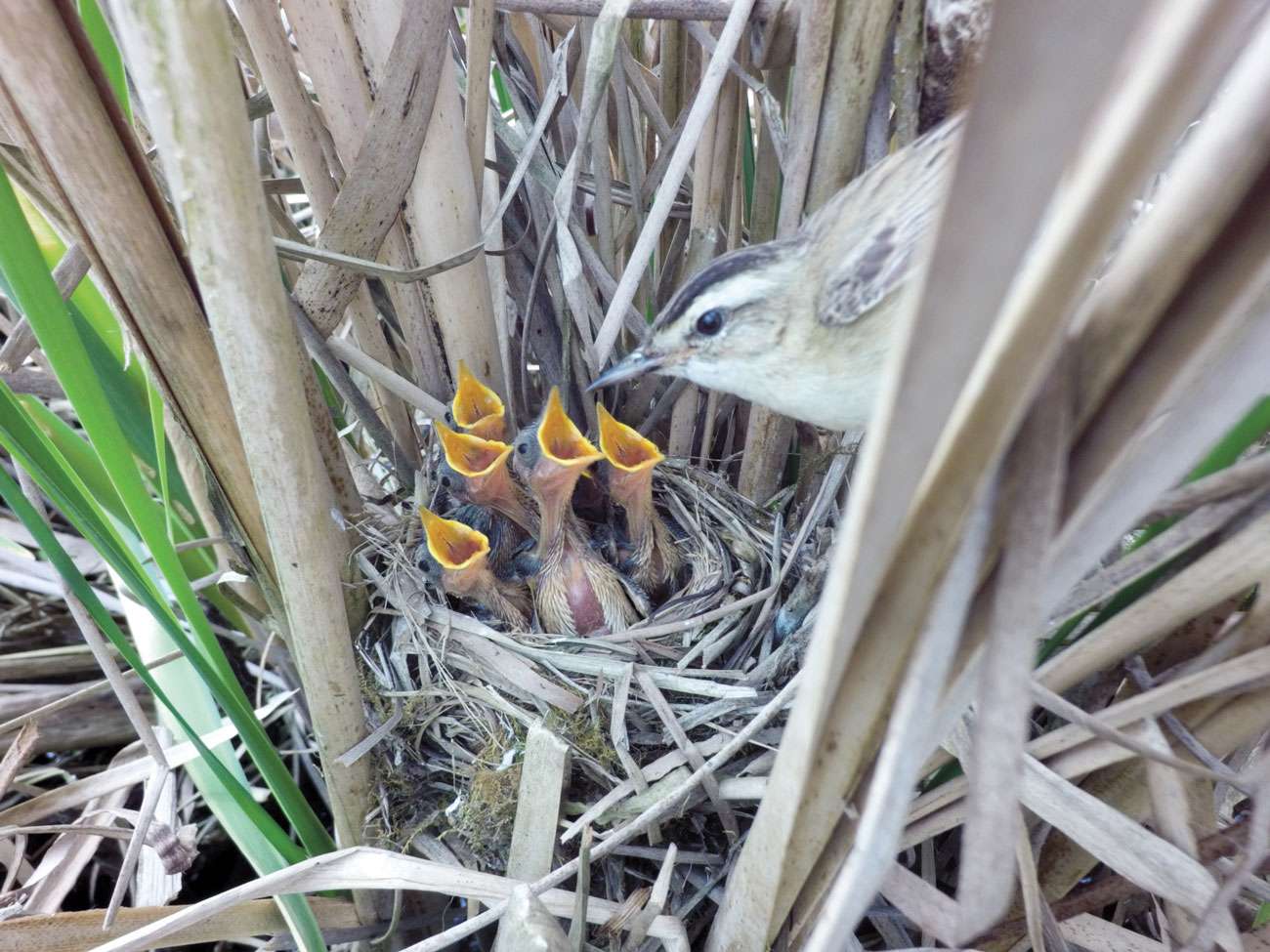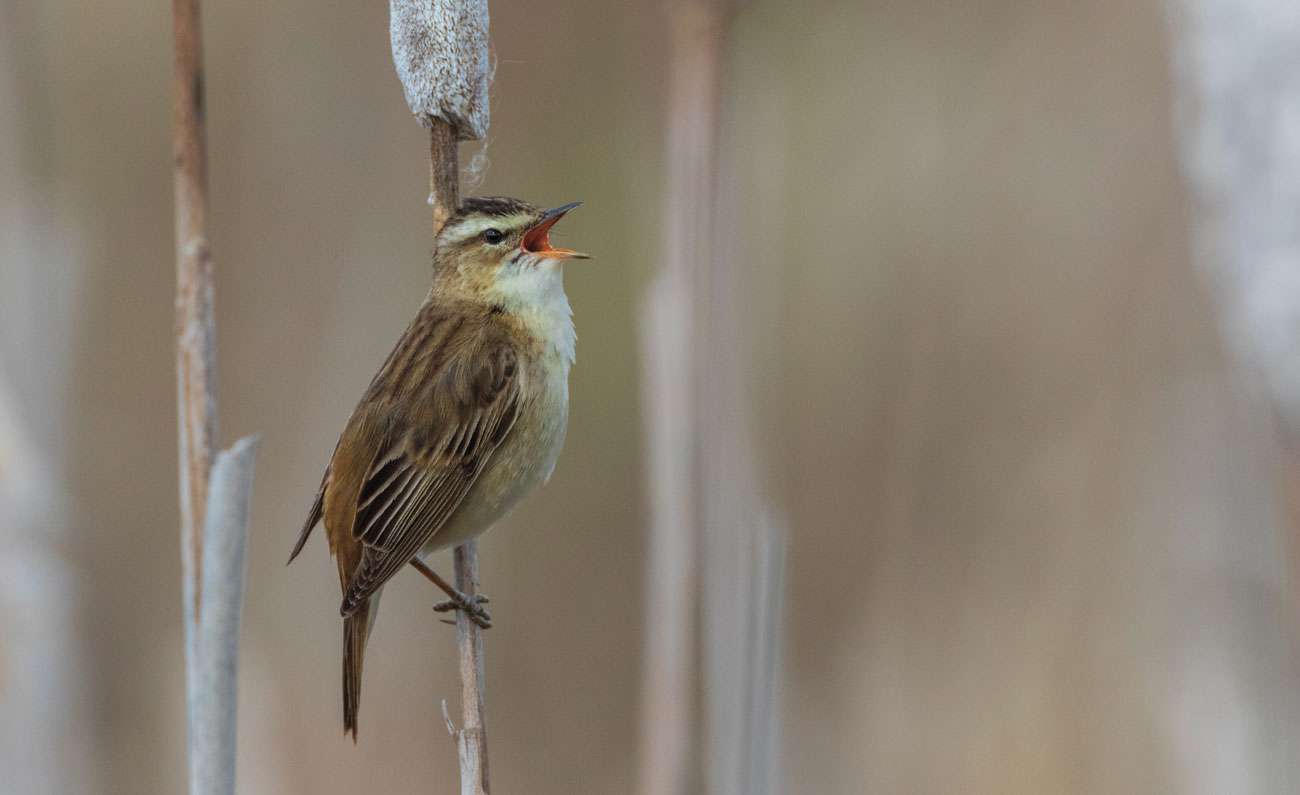
Sedge Warbler (Acrocephalus schoenobaenus)
Some summer birds that get me rather excited are those I’m fortunate enough to find when they make a brief stopover in the Cranleigh area.
Blink and they are gone to other areas in Britain, or further afield, where they have the breeding habitat they cannot find around our village.
Just a 20-minute drive away in the Surrey Hills last year I was delighted to catch up with a once regular breeder to be found in the beech and silver birch woodlands of the Hurtwood and Leith Hill.
Sadly this bird’s beautiful trilling song from the canopy of freshly emerging green leaves is no longer to be heard around here and to my knowledge it has not been seen since April 2012. Strongholds in other parts of the south of England for this lemon-throated songster, superficially resembling a large Willow Warbler, have recently drawn similar blanks.
So when a short-staying Wood Warbler was found alongside the Newlands Corner car park it was a magical moment to be able to see and hear it once again in our county. I bet it had probably flown over Cranleigh to get there!
Around the same time there was another short stayer to witness nearby when a male Pied Flycatcher dropped in at Britten’s Pond in Jacob’s Well and did ‘what it says on the tin’.

A Sedge Warbler with chicks (Acrocephalus schoenobaenus)
Rather than being in its usual haunts in the oak woods of Devon or Wales, here it was showing well on scattered trees beside the water as it fed on juicy flies to replace calories lost on the long journey from tropical Africa.
This year has been true to form, with neither of these birds putting in a local appearance. But a more common bird in Britain, a noisy Sedge Warbler, turned up in Cranleigh for a very brief visit. We don’t have any local reed beds that are its choice habitat so any visits are rare.
Fortunately I was tipped off and, because this was only the fourth record for the area and I hadn’t seen one here this century, I was soon on my way to an overgrown area of a field where I expected to hear its rhythmic chattering and grunting.
The first one I saw locally was way back in the August of 1996 but I couldn’t count it because it was sadly moribund, having been picked up dead or captured by a cat.
Two years later I saw and heard one singing from the overgrown bank of a small pond off Knowle Lane. So it had been a long wait.
There were many other warblers in the vicinity but not the hoped-for Sedge. I waited on edge, hoping it would suddenly pop up from its chosen bramble patch. The pressure was on as I only had half an hour to spare. But I was too late. It had presumably gone or had shut up shop and was skulking deep inside the vegetation.

Sedge Warbler in full song (Acrocephalus schoenobaenus)
Next morning just after dawn I was back at the same site. Well, you’ve got to be an optimist in this game. But there was no sight nor sound of it. I trudged off after an hour, somewhat deflated.
Then two days later I was out looking for migrants elsewhere in the village, as one does in the Spring, and I thought I heard a familiar call. Then I heard a brief snatch of distant song. Surely I was imagining things?
I cupped my ears but all birdsong was annoyingly drowned out by a passing aeroplane. I waited for it to pass.
Then sure enough was that song once again. And up popped the bird responsible on the edge of a willow. Sedge Warbler!
Birding can be like that. Birds remind me of our buses. None for ages and then the 53 and 63 both come nearly together.
Twitter – @Crane_Spotter
Click here to see all of Robin Stride’s previous Crane Spotters.











